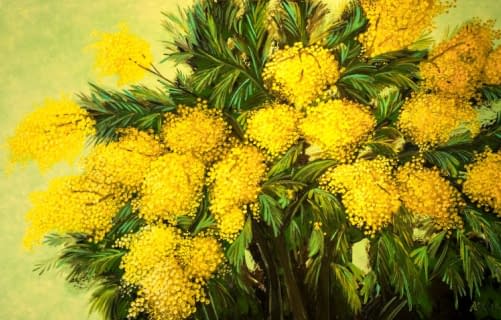Short Summary
🎨 The Development of the Visual Arts in Morocco: Tradition & Modernity in Dialogue
From filigree Islamic art and the symbolic Berber aesthetic to the influences of Orientalism and the French colonial period to modern Moroccan artists - Morocco has a fascinating art history. Learn how artists such as Eugène Delacroix, Henri Matisse and Francis Bacon were inspired by Morocco and how Moroccan artists shaped the international art scene.
➡️ Discover the cultural currents, iconic works and artistic exchange between Morocco and Europe!
🖼️The Development of the Visual Arts in Morocco
📜 Before the 20th century - Traditional art
For centuries, Moroccan art was strongly shaped by the various cultural influences and traditions that shaped the country. Among the most important influences were the Islamic and Berber cultures, which left deep traces in their respective forms of art and architecture.
🟢 Islamic Art:
The Islamic art of Morocco is characterised by a high level of sophistication in the use of calligraphy, which was used not only as an art of writing but also as an aesthetic design element in architecture. Particularly famous are the ornate mosaics, called Zellij, which depict geometric patterns and floral ornaments. These mosaics adorned both public and private spaces and are still a hallmark of Moroccan architecture today. The woodwork and stucco work found in mosques and palaces, as well as the ceramic works, which range from ornate jugs to elaborate tiles, also bear witness to the high level of craftsmanship of this era.



🟢Berber Art:
The Amazigh (Berber) culture produced a distinct visual language that was particularly visible in textiles, jewellery and body adornments. The most famous examples are the hand-woven carpets, which were not only functional objects but also served as an expression of cultural and social identity. Berber art is characterised by distinctive patterns and symbolism that are deeply rooted in the spiritual and everyday world of the Berbers. Body decorations, especially tattoos, are also an important part of the tradition, which often served as symbols of protection or to mark phases of life.
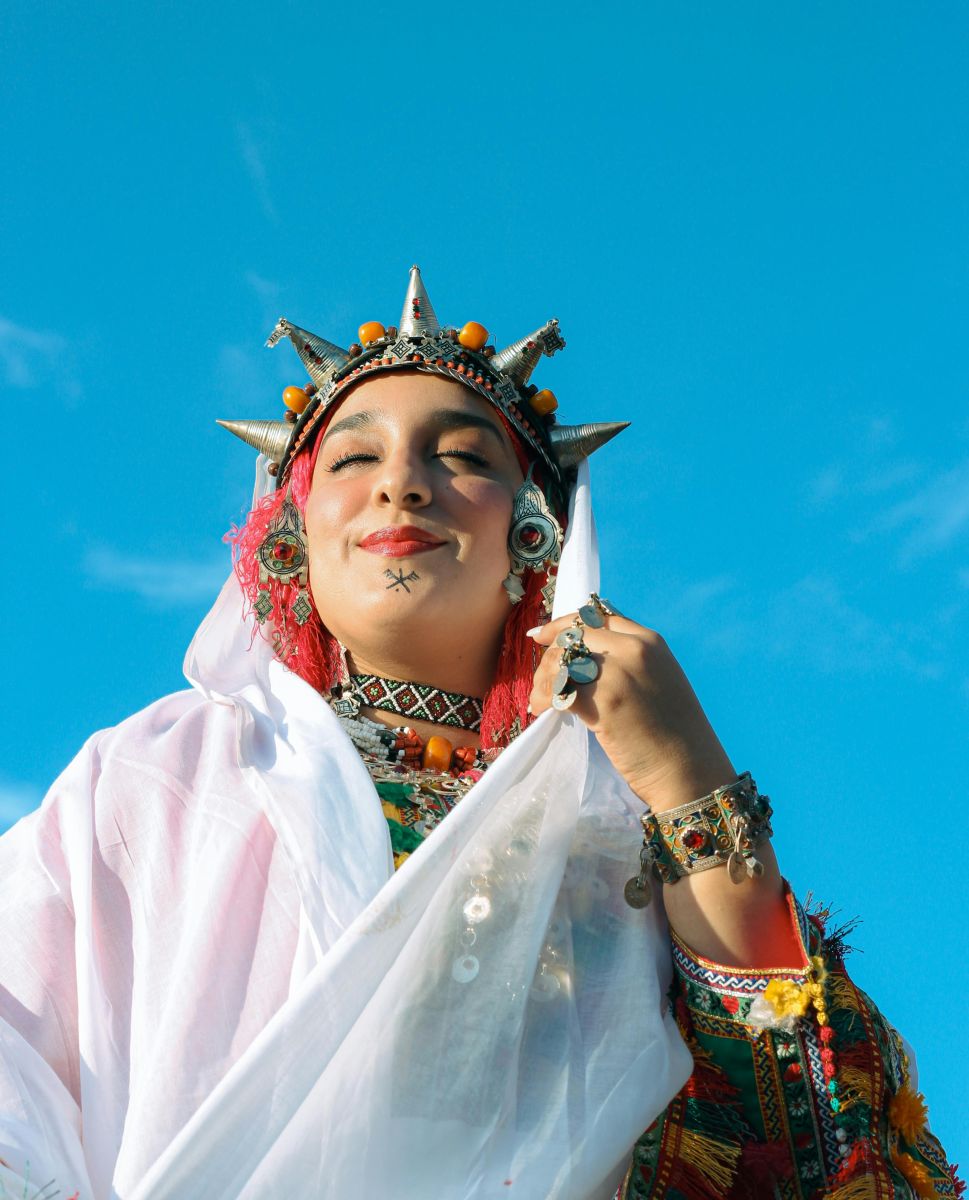
🎨1912-1956 - Colonial Influences
The influence of Morocco on art in France can be seen in various ways, particularly in the field of modernism. Artists who came from France or lived in France sought inspiration in Moroccan culture and its charm. This influence could be clearly seen in several artistic movements:
Eugène Delacroix and Morocco
Delacroix travelled to Morocco in 1832 as part of a diplomatic mission from King Louis-Philippe. During his stay in Tangier, Meknès and other Moroccan cities, he was fascinated by the colourfulness, the architecture and the people. He made numerous sketches and watercolours, which later served as the basis for his famous paintings.
After his return to France, Delacroix began to integrate Moroccan motifs into his art. Some of his most famous works inspired by this journey are:
- ‘The Sultan of Morocco’ (1845) - This work shows the Sultan Mulai Abd ar-Rahman on his horse, surrounded by his entourage. Delacroix depicted him with great respect and richness of detail, which emphasises his fascination with Moroccan culture. On display in the Emil Bührle Collection, Zurich.
- ‘Moroccan Cavalcade’ (1832-1837) - A depiction of Moroccan horsemen that Delacroix had observed in Tangier. He was particularly fascinated by the dynamism and elegance of Moroccan horsemanship.
Delacroix's works were an important starting point for Orientalism, a 19th century art movement brought about by colonialism, in which European artists depicted exotic motifs from North Africa and the Middle East. His influence extended to Henri Matisse, who travelled to Morocco around 80 years later and was inspired by the colours and shapes there.

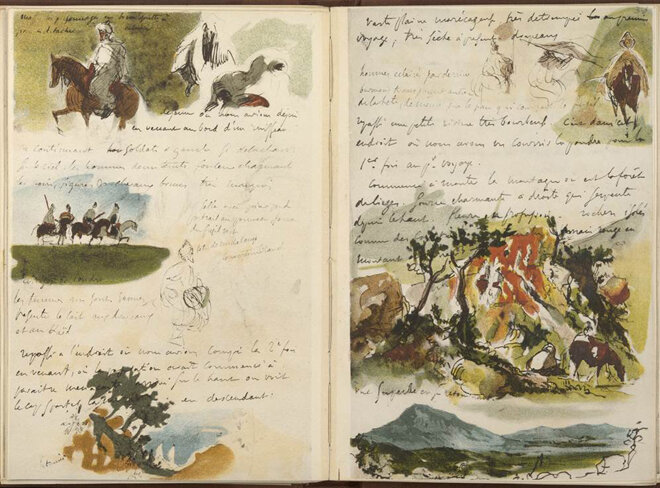
Henri Matisse and Morocco
At the beginning of the 20th century, Henri Matisse travelled to Morocco. This country, with its unique landscape, architecture and culture, offered Matisse new perspectives and shaped his approach to colour and form. The vibrant colours, intense light and ornamental design that he experienced in cities such as Tangier had a particularly lasting influence on his style. In his works from this period, including ‘Paysage marocain (Acanthes)’ (1912), ‘Zorah sur la terrasse ’ (1912) and ‘Porte de la Casbah’ (1912), he experimented with bright, high-contrast colour fields and simplified forms that are typical of Fauvism. The trip to Morocco encouraged Matisse in his turn to pure, expressive colours, which continued to shape his later work.Delacroix's works were an important starting point for Orientalism, an art movement of the 19th century brought about by colonialism, in which European artists depicted ‘exotic’ motifs from North Africa and the Middle East. Its influence extended as far as Henri Matisse, who travelled to Morocco around 80 years later and was inspired by the colours and shapes there.
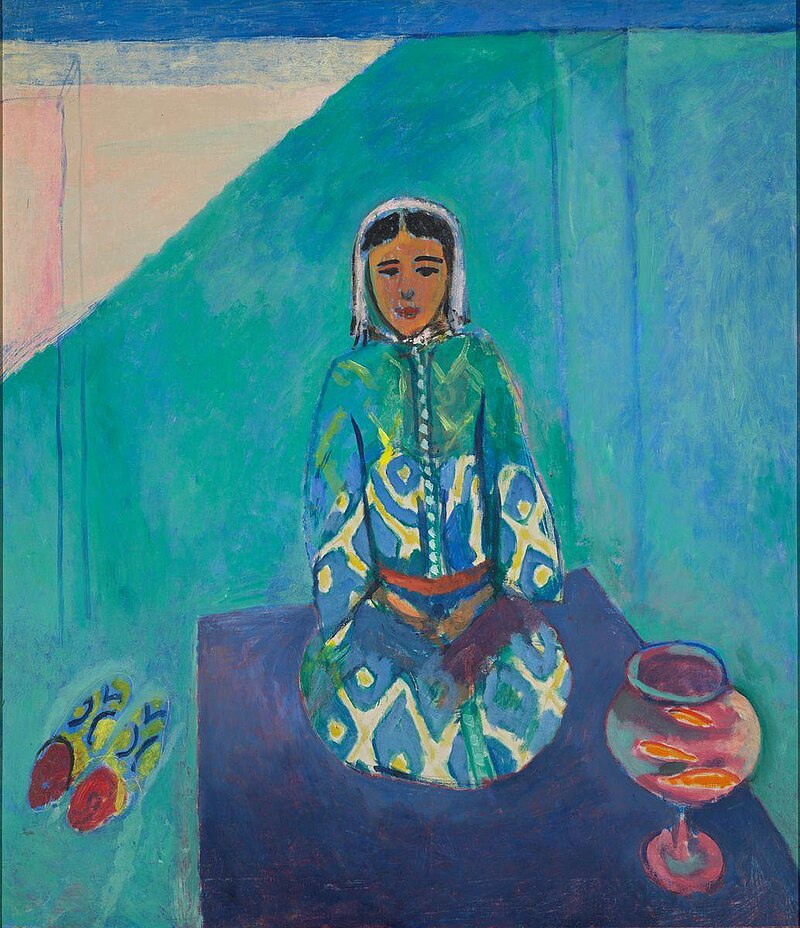
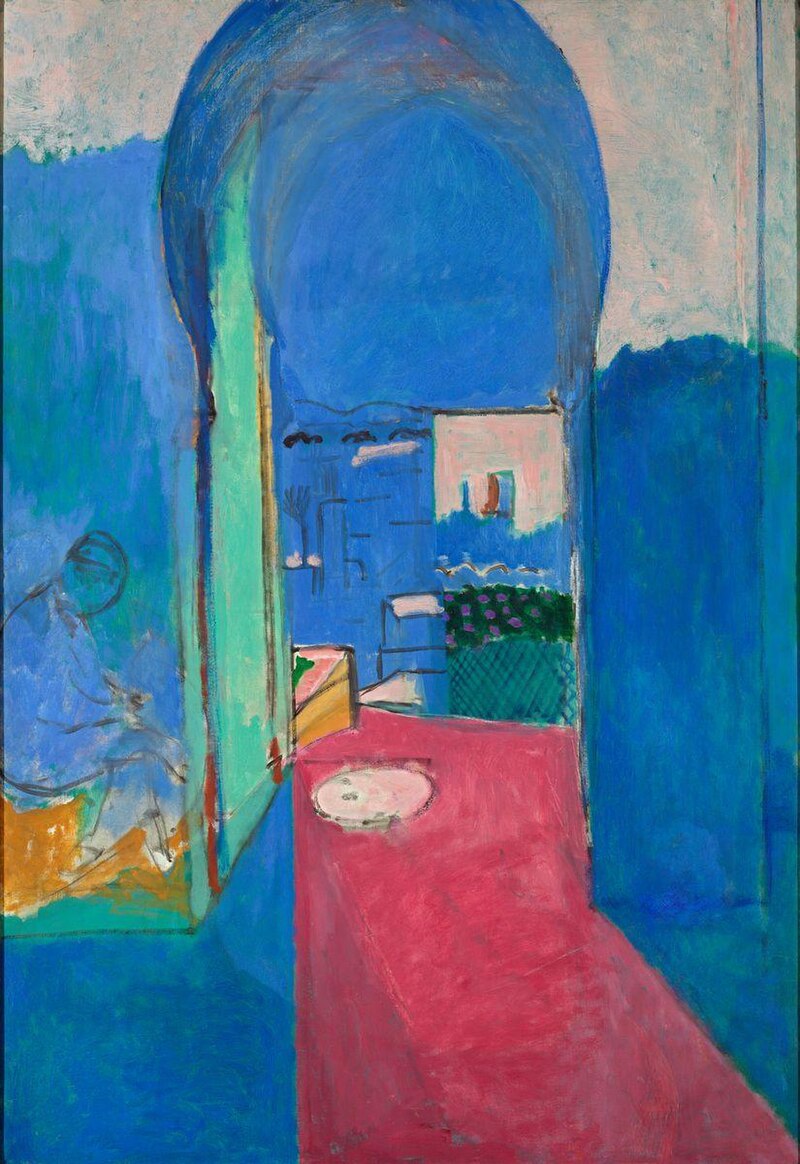
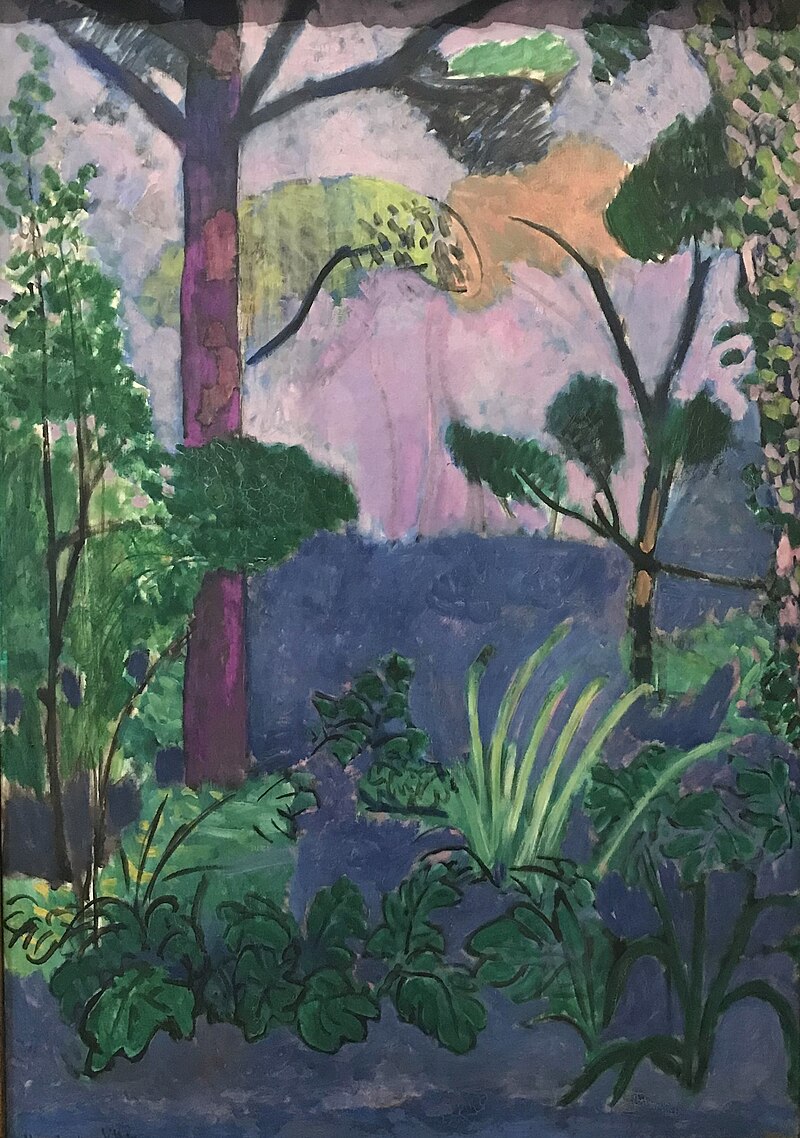
Orientalism and Documentary Painting
Other Western artists, including Jacques Majorelle and Ch. A. Mangin, often depicted Morocco and the Orient in an idealised or documentary manner. While Majorelle used bright colours to highlight the country's special beauty, Mangin's approach was characterised by a special peacefulness and timelessness.
Mangin travelled through North Africa in 1934 and painted cities and gardens in Akka, Freyja, Marrakesh, Tiznit and Meknès. His works are characterised by earthy tones, a distinctive blue and a deliberate use of brushstrokes and palette knife strokes. His depictions of deserted streets and alleyways or small groups of figures in harmonious colours are particularly striking.
Mangin's works are not only artistic depictions, but also valuable contemporary documents that show a Morocco before the great changes of the colonial era. His pictures convey an atmosphere of tranquillity and vastness, which sets them apart from the often overloaded, romanticised depictions of many Orientalists.
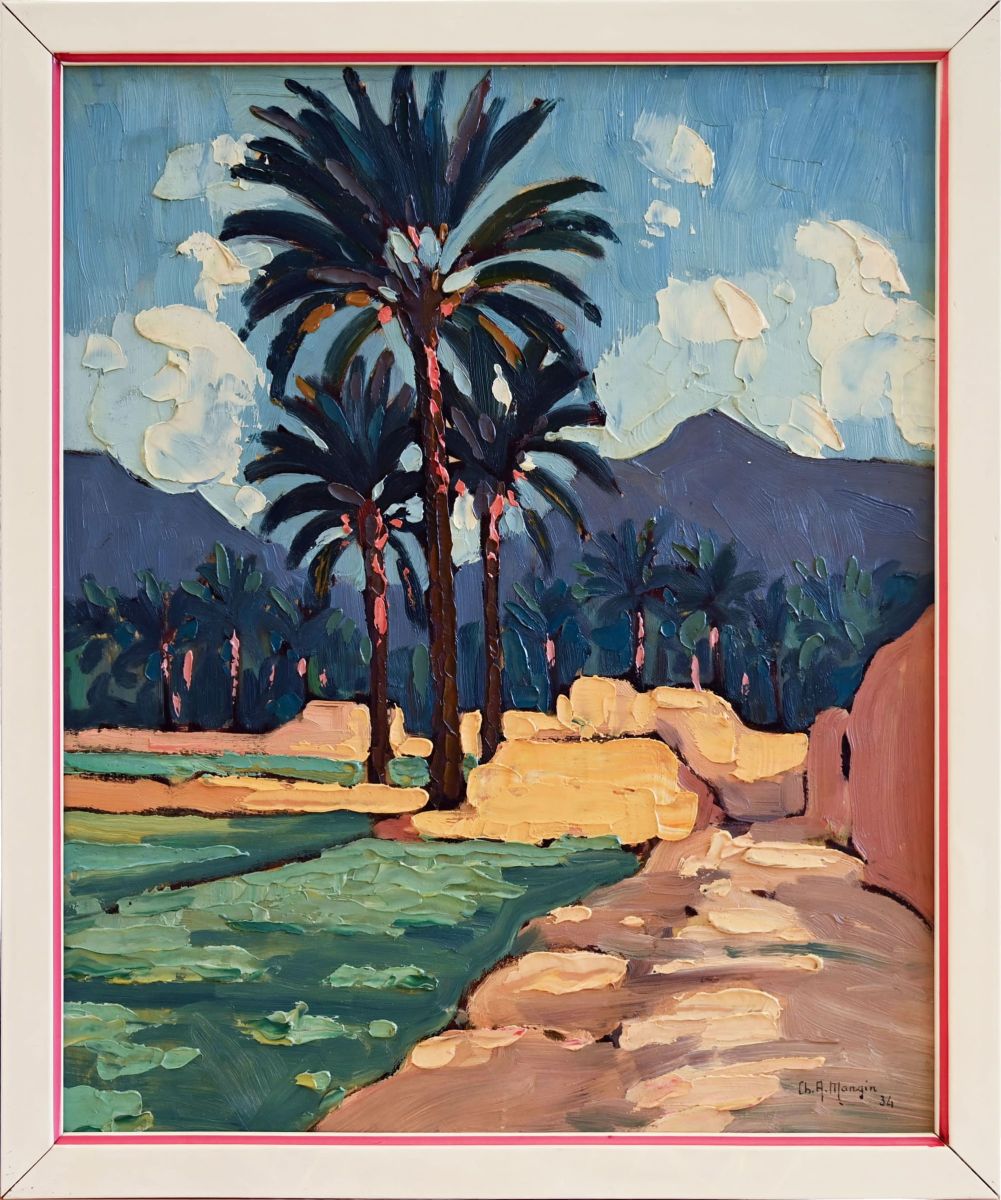
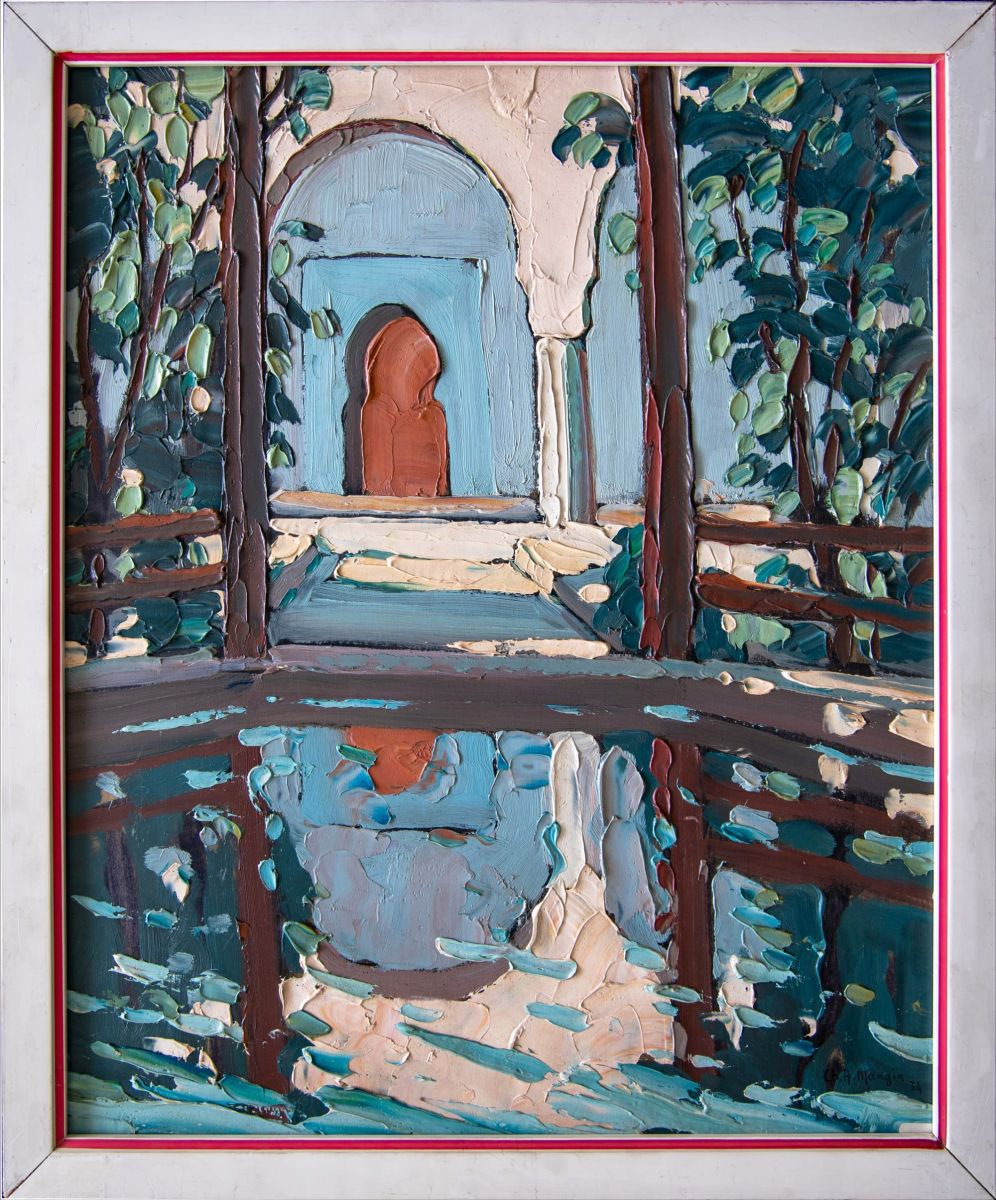
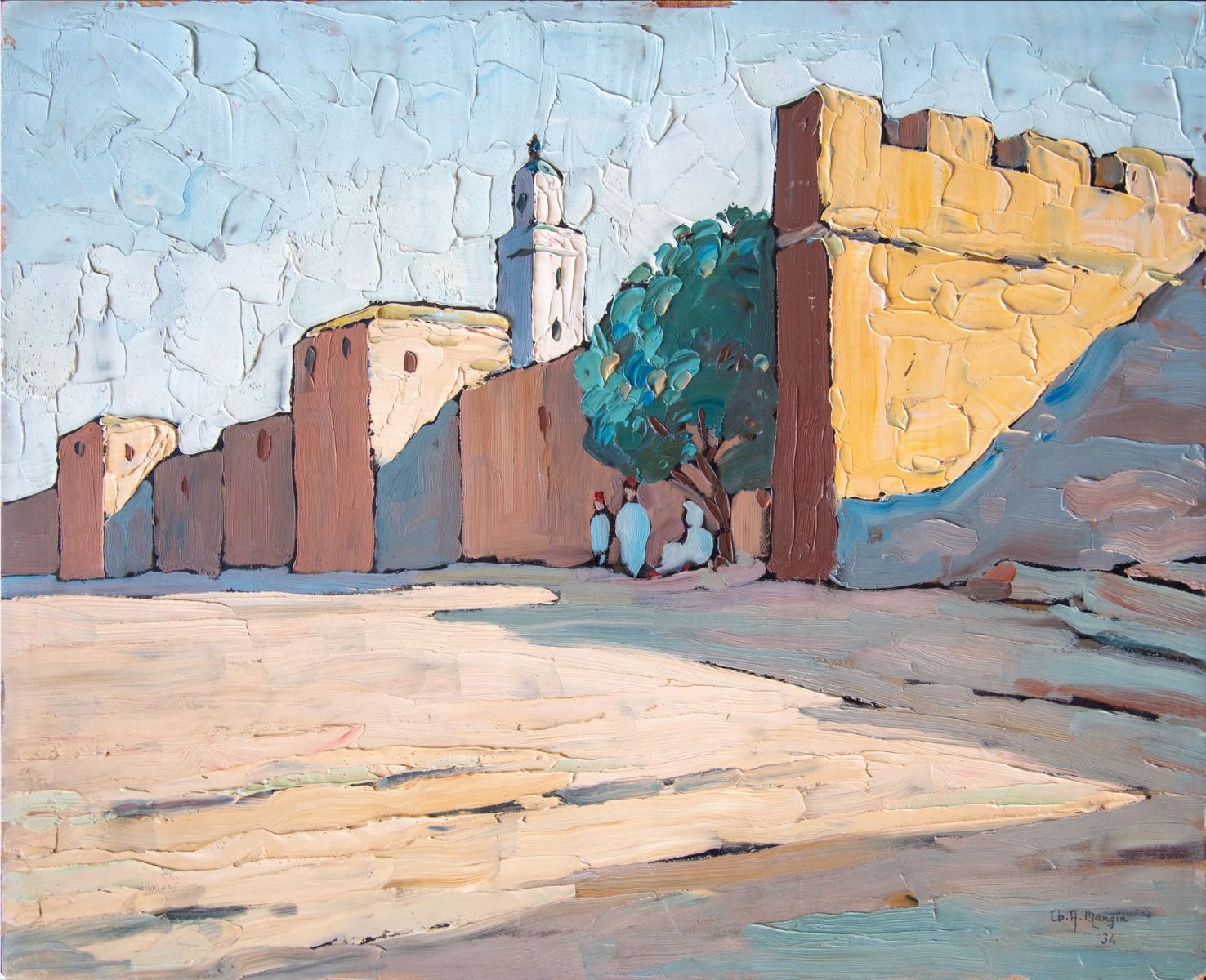
The Surrealist Breton's Escape to Morocco (1941)
The Surrealists also found their way to Morocco.
During the Second World War, France was occupied by Nazi Germany in 1940. Breton, a leading Surrealist and avowed anti-fascist, was persecuted by the Vichy government and had to leave the country. Together with other artists and intellectuals such as Max Ernst, Victor Brauner, Wifredo Lam, André Masson and the ethnologist Claude Lévi-Strauss, he fled to the south of France and finally to Morocco.
Casablanca was an important refuge for European artists during the Second World War. It was one of the last stops for those who wanted to emigrate to America, as ships left for the USA from there. For a few months, the city developed into a centre for the Surrealist movement in exile, as many artists stayed there. Breton, Ernst and other Surrealist thinkers held intensive discussions about art, politics and the unconscious during this time.
During his stay in Morocco, Breton wrote “Fata Morgana” (1941), a surrealistic poem written under the impression of the uncertainty of exile. The work combines dream and reality, typical of Surrealism, and reflects the political and existential crisis of his time. The Moroccan environment - the intense light, the desert and the atmosphere of the city of Casablanca - probably influenced his writing style.
Francis Bacon in Tangier (1950s)
Francis Bacon, one of the most important British painters of the 20th century, made several long stays in Tangier in the 1950s. At the time, Tangier was an international centre that attracted many artists, writers and eccentrics.
Why was Bacon in Tangier? To escape conventions: In the 1950s, Tangier was known for its relaxed social structure, in which outsiders, artists and intellectuals could move freely. Bacon, who was openly homosexual, felt more comfortable there than in the prudish Britain of the time. Tangier became a meeting place for artists and writers, including Paul Bowles, William S. Burroughs and Jean Genet. Bacon moved in these circles and spent time with wealthy friends and lovers. There are few explicit references to Morocco in Bacon's paintings, but his time in Tangier may have influenced his later colour scheme. Some of his works from the late 1950s show an unusually warm colour palette, possibly due to the intense light and shadow conditions in Tangier. With Morocco's independence in 1956, Tangier also changed. It slowly lost its status as an international enclave. Bacon left this place and eventually moved back to Paris and London, where he created his great works of the 1960s and 1970s.
Moroccan Artists in France
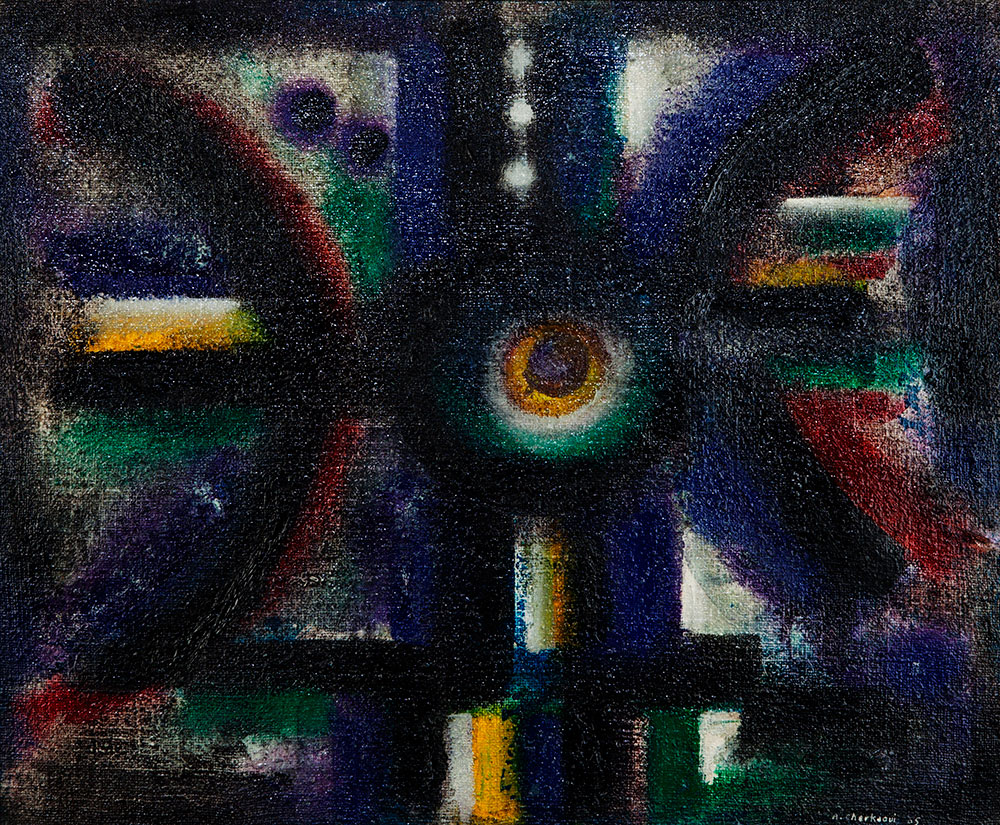
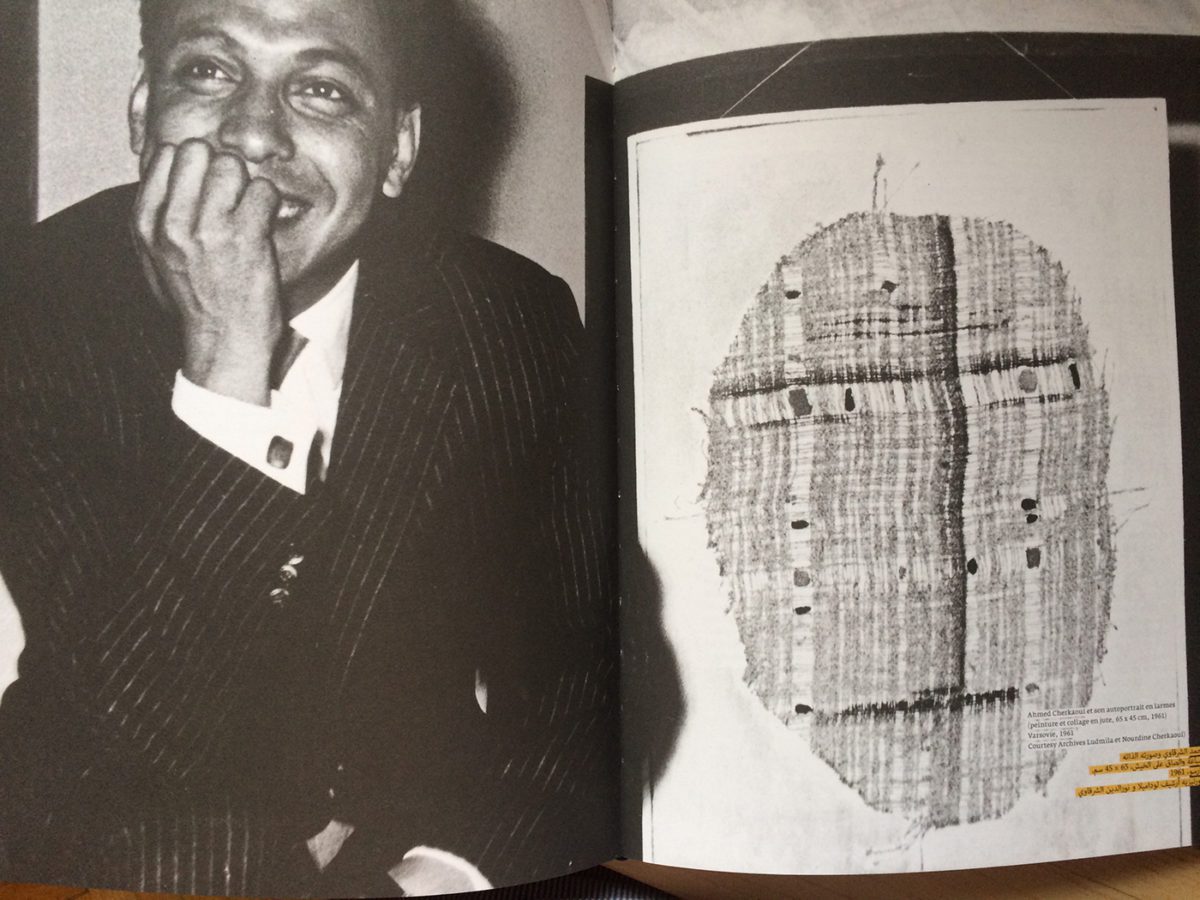
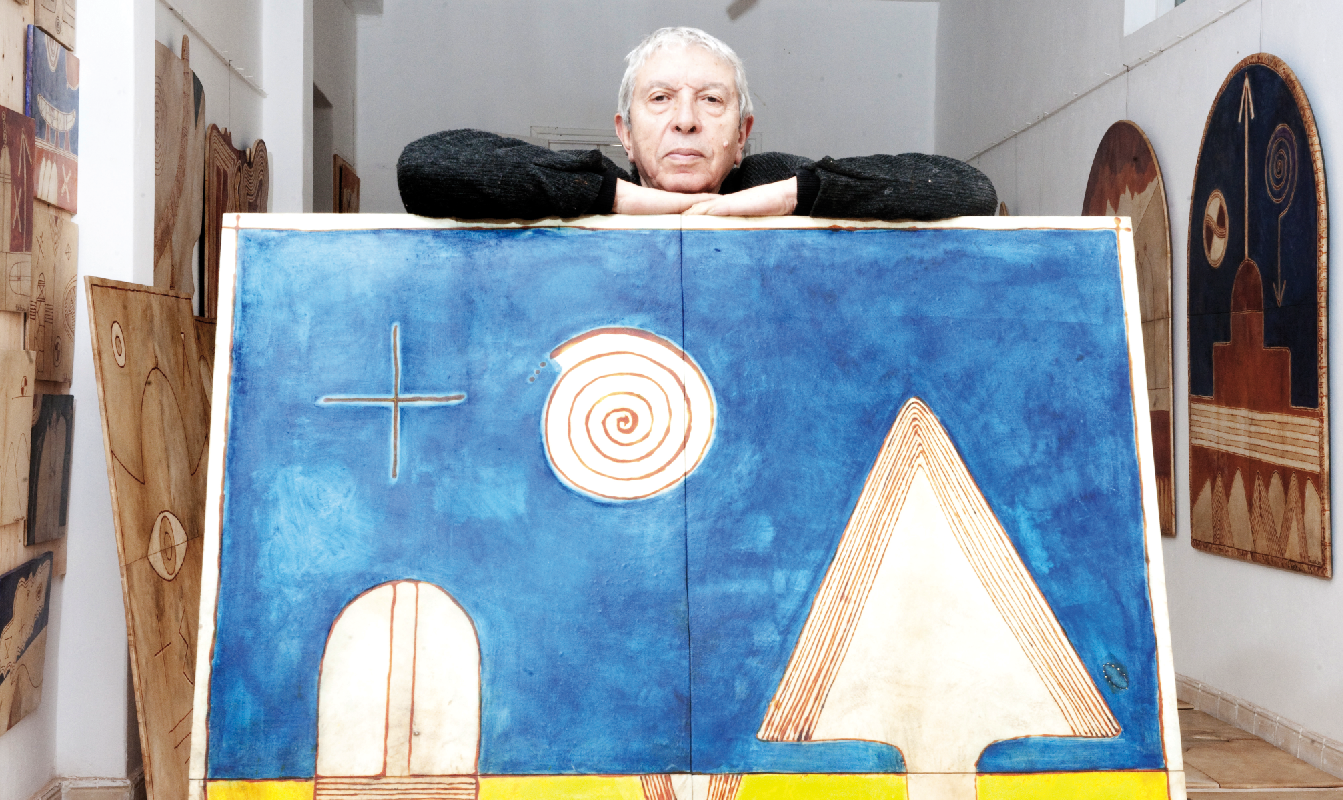
Another important aspect is the influence of Moroccan artists on the French art scene. After Morocco's independence in 1956, many artists and intellectuals moved to France to present their work and become involved in the European art world. Moroccan painters, such as Ahmed Cherkaoui and Farid Belkahia, influenced the French art scene by integrating traditional Moroccan art techniques with modern European styles. The following influences can be traced:
🔵 The Nouvelle École de Paris (“Post-War Avant-Garde”)
- In the 1950s and 1960s, Paris became a melting pot for artists from all over the world. The works of Cherkaoui and Belkahia attracted a great deal of attention in Paris and influenced the artists of the Nouvelle École de Paris, a group that turned away from classical Western painting and increasingly integrated non-European influences.
- Their experimental use of materials (Belkahia used leather instead of canvas) and the combination of abstraction with cultural identity inspired artists such as Pierre Soulages, who himself became known for his minimalist, almost calligraphic works.
🔵 French Abstract Painting & Art Informel
- Hans Hartung and Jean Dubuffet, who worked with spontaneous, raw-looking painting, were impressed by Cherkaoui's sign and character-inspired compositions.
- Dubuffet, who promoted ‘Art Brut’ (raw, unacademic art), saw Cherkaoui's symbolism as an authentic form of expression that broke away from traditional Western art history.
🔵 Postcolonial and Identity Art
- Zineb Sedira and other French-Algerian artists of the 1990s were inspired by Belkahia's approach to dealing with colonial and cultural identities in art.
- Belkahia's emphasis on craft traditions as an art form helped to raise awareness of non-Western artistic techniques in Europe.
🔵 African and Arab Modernism
- Cherkaoui and Belkahia paved the way for later artists from North Africa and the Middle East who also navigated between European and Arab art, including Mohammed Melehi and Chaïbia Talal.
- Their works inspired artists from Algeria, Tunisia and Lebanon, who also began to translate traditional motifs into a modern formal language.
Western, Academic Painting in Morocco
During the French and Spanish foreign rule in Morocco, European painting techniques once again influenced the local art scene. Some Moroccan artists began to study at Western art academies, but often returned with a mixture of traditional and Western styles. This led to a unique synthesis of European painting techniques and Moroccan motifs. At the same time, the 1920s saw the formation of artist groups such as the Rabat Group, which was shaped by artists such as Ahmed Ben Driss El Yacoubi and Mohamed Ben Ali R'bati (the father of Moroccan painting). This group laid the foundations for modern Moroccan art by combining traditional Moroccan elements with Western influences, thus paving the way for the development of a modern artistic language of its own.
🚀1960s-1980s - Modernism & National Identity
With Morocco's independence in 1956, a new artistic self-image developed that emphasised a national identity and attempted to free itself from colonial influences. Art was increasingly used as an expression of Moroccan culture and history.
🟠Casablanca Art School:
Artists such as Farid Belkahia, Mohammed Melehi and Mohamed Chabâa were part of a new generation of artists who formed an artistic school in Casablanca. These artists created abstract and geometric works that were often inspired by traditional Berber motifs. At the same time, they absorbed influences from international modernism, creating a new, independent aesthetic.

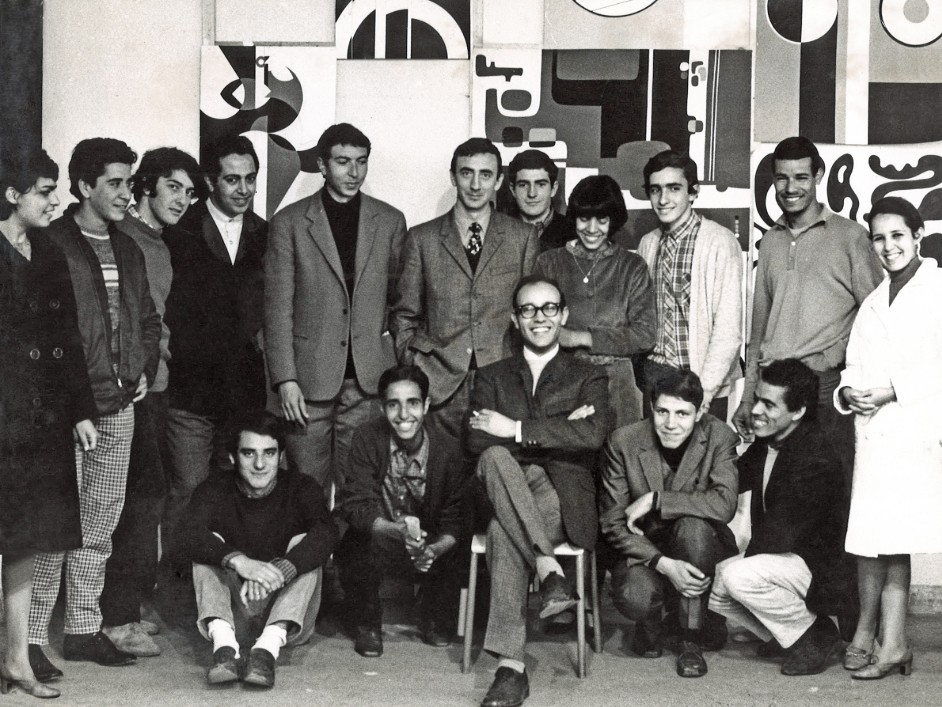
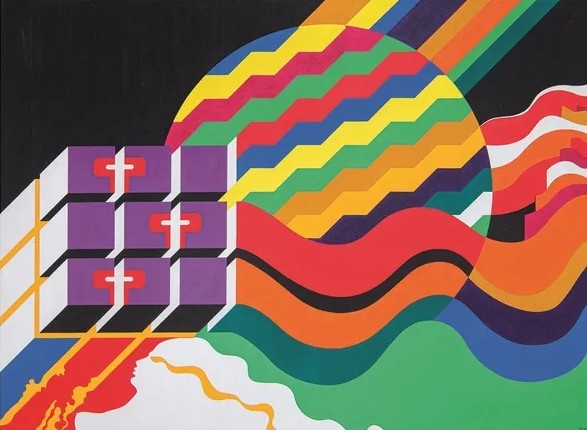

🟠Symbolism and Folk Art:
During this period, artists such as Ahmed Cherkaoui began to combine traditional symbols and motifs with modern art forms. Cherkaoui, for example, worked with symbols from Berber culture and combined them with abstract painting techniques to convey a deeper cultural meaning.
🟠Naive Art:
Chaibia Talal, one of Morocco's best-known self-taught artists, developed a colourful and expressive naïve painting style. Her works, which are often infused with feminist and social topics, earned her international recognition and contributed to the Moroccan art scene being recognised worldwide.
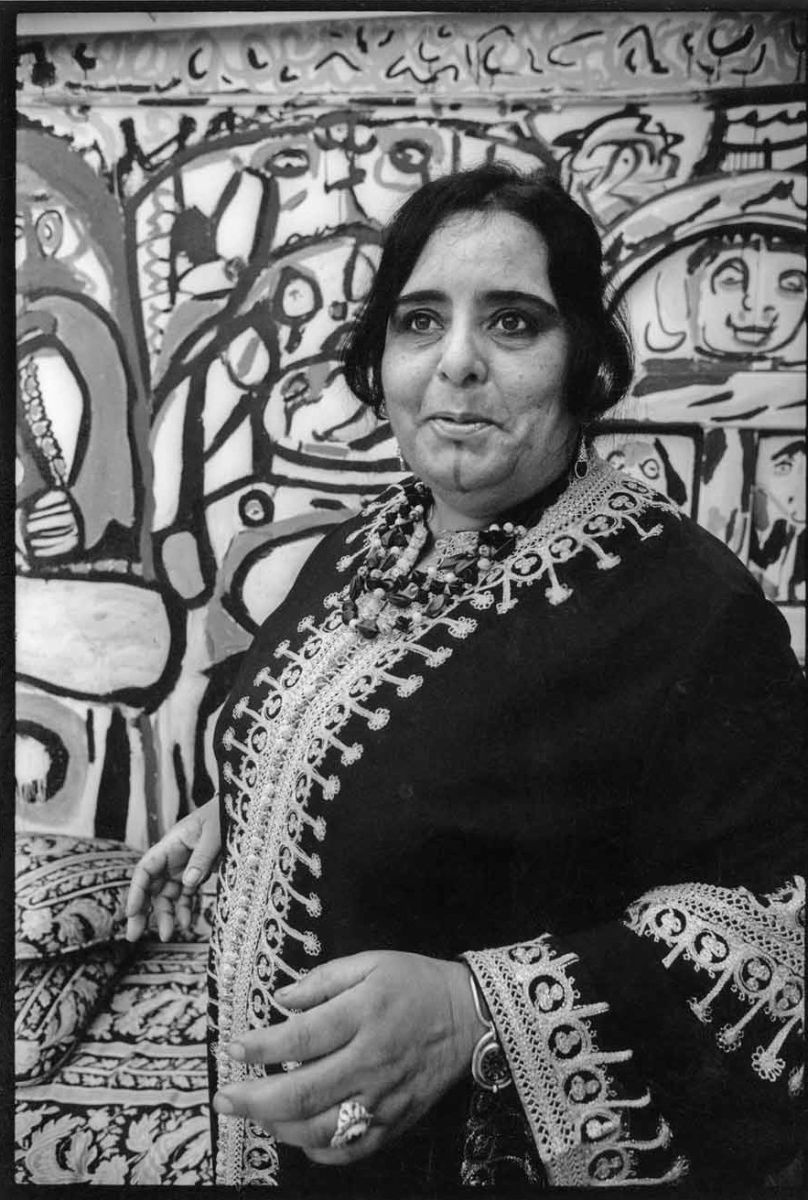
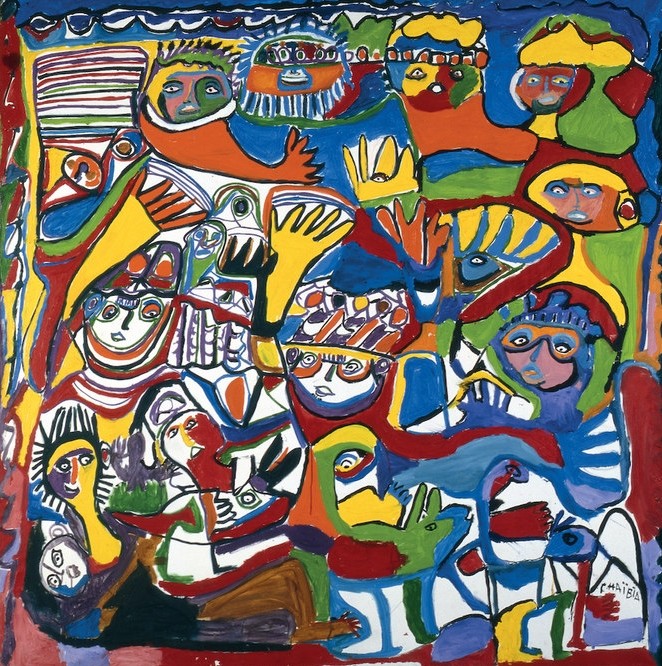
🌍 From the 1990s - Contemporary Art
With the advent of globalisation and the increasing interconnectedness of the art world, the Moroccan art scene began to present itself more strongly in international contexts and develop new forms of expression.
🔴 International networking: Artists such as Hassan Hajjaj, Mohamed El Mahdi Haydar, Yto Barrada and the aforementioned Chaibia Talal have become internationally recognised and have taken part in major exhibitions and Biennales. Their works increasingly deal with global issues and offer a dialogue between Moroccan culture and the world stage of art.
🔴 New media: In the 1990s, new media such as photography, video, installations and street art gained importance in Morocco. These art forms enabled artists to address social, political and cultural issues in innovative and unconventional ways. The street art scene in particular experienced a boom, with artists beginning to use urban spaces as canvases for their works.
🔴 Art festivals: International platforms such as the Marrakech Biennale (since 2005) and the Asilah Arts Festival have further promoted the dialogue between Moroccan and international art. These festivals are not only important events for the art scene, but also for the promotion of cultural exchange and the presentation of contemporary artistic perspectives.
🔴 Social topics: Many artists in the contemporary art scene in Morocco deal intensively with social topics. Migration, identity, colonial history and women's rights are central themes that are addressed in their work. This art not only depicts the social and political realities of Morocco, but also actively participates in the global debate on these issues.
Women at the Centre of the Contemporary Art Scene
From the 2000s onwards, more and more Moroccan women artists began to explicitly address the role of women in society and to raise an artistic voice that thematised the challenges and opportunities of being a woman in Moroccan and global society. Artists such as Lalla Essaydi, Bouchra Khalili, Rachida Aziz and Meriam Bennani have played a key role in shaping these developments and have achieved international recognition.
Lalla Essaydi - The Representation of Women in an Islamic Context
Lalla Essaydi is a well-known contemporary Moroccan artist who focuses intensively on the representation of women in the Islamic and Moroccan context. In her photographs, in which she often appears as a model herself, she uses henna as a medium to thematise patriarchal structures and the self-perception of women in Morocco. Her works combine traditional symbolism with modern concepts and reflect the complex identity of women in a globalised world.
Bouchra Khalili - Migration, Identity and the Voice of Women
Bouchra Khalili is an internationally renowned artist who addresses migration, identity and the political situation of women in her video works and installations. In her project ‘The Mapping Journey Project’, she gives migrant women a voice to tell their experiences of migration and flight. Her works offer a critical perspective on Western views and focus on the relationships between power and gender.
Chaibia Talal - The Feminist Vision of Naïve Art
Chaibia Talal, one of the first representatives of modern Moroccan art, is known for her colourful, naive painting style. Her works combine symbolism and feminist themes, with women often taking centre stage. Talal showed the versatility of women's roles in Morocco and created a new, feminine narrative that challenged traditional depictions of women as passive figures. Her paintings often show strong, lively female figures in bright colours and expressive forms. Traditional Moroccan patterns are combined with a modern, symbolic visual language. Women appear in her works as mothers, workers or dancers - not as subordinate beings, but as active creators of their lives.
Meriam Bennani - A Young Artist between Tradition and Modernity
Meriam Bennani, a young Moroccan artist, addresses the conflict between traditional expectations and the self-realisation of women in her humorous and ironic video pieces. She examines the impact of global and local cultures on the identity of women in Morocco and questions classic narratives about women.
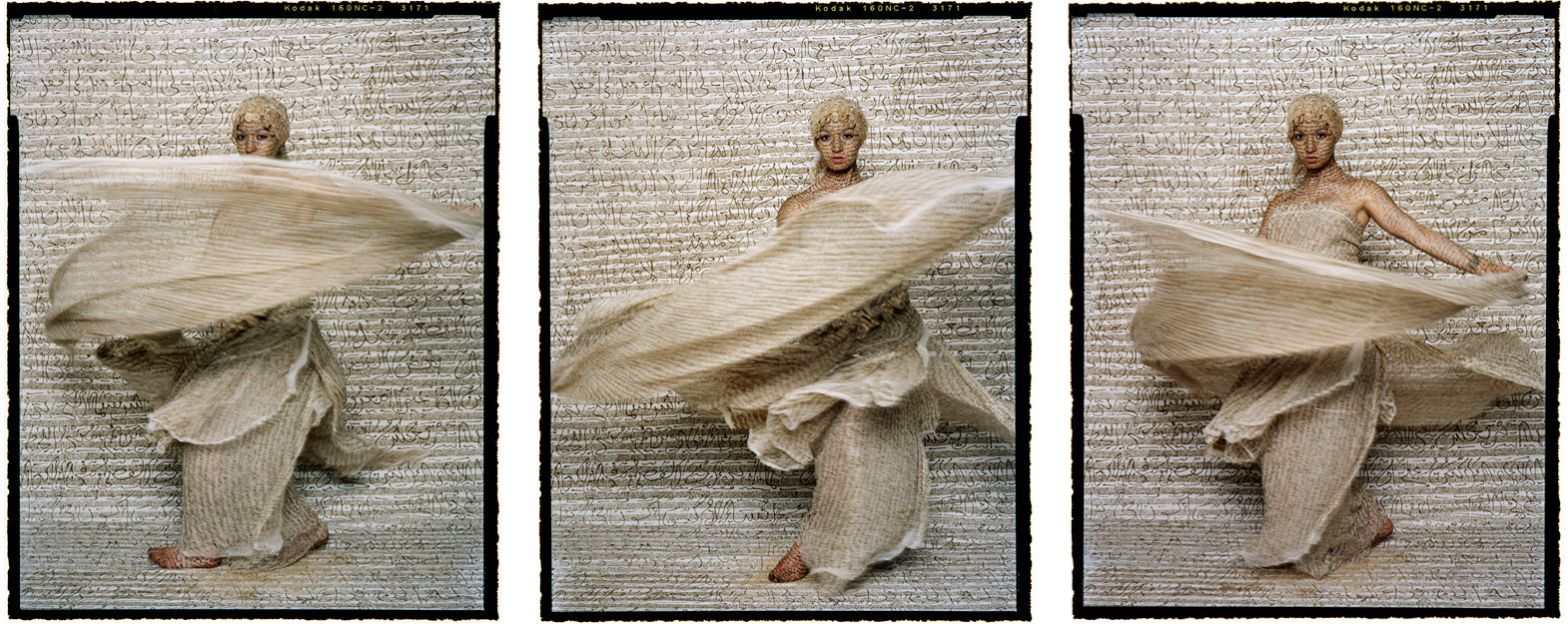
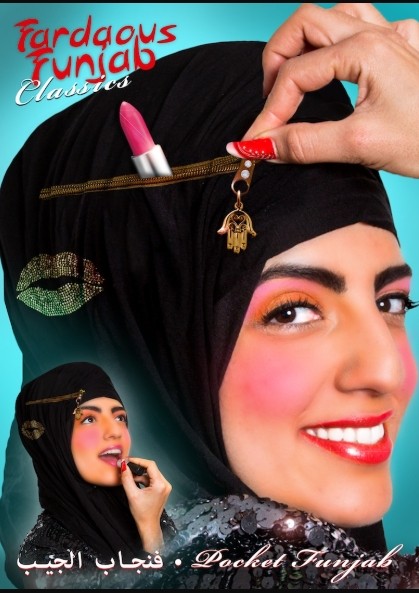
The Influence of Globalisation and New Media
The artists mentioned above belong to a generation of Moroccan artists who have been influenced by increasing globalisation and new media. Through the use of photography, video, installations and digital media, they have helped shape an international art scene that addresses Morocco's cultural specificities as well as global issues such as migration, identity and gender equality.
These artists have helped to establish Morocco as a place where not only the country's traditions are preserved, but also a new, dynamic art scene with international significance is emerging. They are an important part of the discussion about being a woman in the 21st century and open up new spaces for the female perspective in art.
Moroccan Art in Transition: A Unique Heritage with a Future
Moroccan art has developed from its traditional roots into one of the most dynamic and innovative art scenes in Africa. The interaction between historical influences, colonial legacies and modern trends has created a unique artistic landscape that is now internationally recognised. From the traditional art of Islamic and Berber cultures to colonial influences and modern and contemporary art - Morocco has a multifaceted and rich art history that is constantly evolving and breaking new ground.
Cover picture: Ch.A.Mangin, Tiznit Maroc.
Author: Cécile Fuchs




